Drawing Basics and Traditional Art
People from the beginning of times tried to represent their ideas, thoughts, emotions and the world around them in a form of art.
We used everything from rocks, to clay, to paint and now – technology.
Even though we are so used to seeing digital art all around the web – some consider it "cheating" or "fast and easy", or "fake".
On the other hand, it is the industry's preferred medium for commercial products.
So the question stands, traditional art vs digital art – which medium is the one?
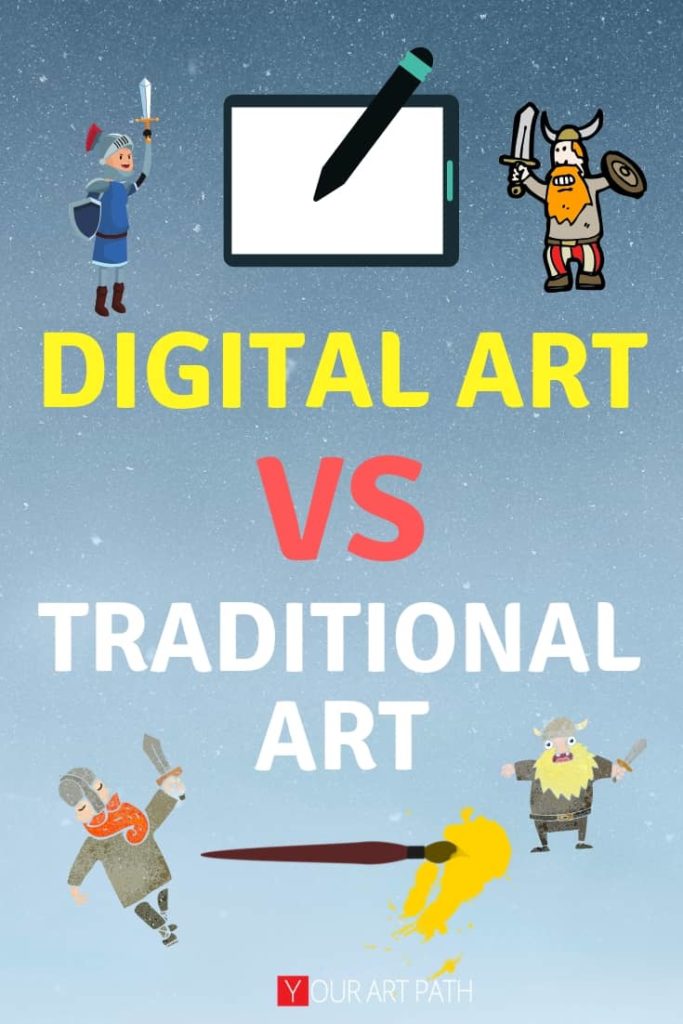
Digital Art Definition
The simplest way I can put it into words: Digital Art is Art Created Using Technology.
It varies from digital painting/illustration, digital sculpting to digital animation and VR.
Any form of art you create using the technology available to you – is your digital art.
Traditional Art Definition
Traditional Art, on the other hand, is any form of art that is created using real media.
For example, pencils, paint, charcoal, pastels, watercolor, clay, chalk, and so on.
Digital Art vs Traditional Art Pros and Cons
The two art mediums are as much alike, as they are different. Let's start by taking a look at some pros and cons for each to better understand the differences.
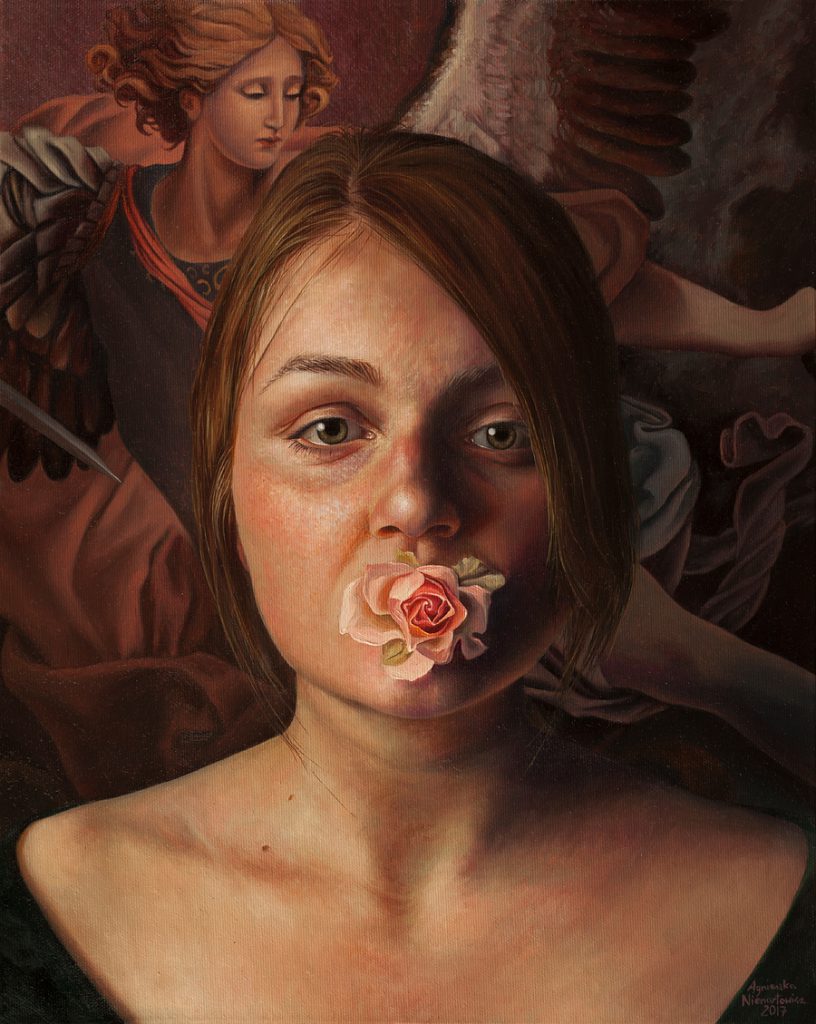
Traditional Art Pros:
Starting as a Kid:
You get better at any form of art with time and practice, and traditional art has probably followed you since you could hold a pencil.
When you were a kid, you drew cute pictures of your mom, dad, siblings (if any), yourself and your house. Most of us created this artwork and were super proud of showing it to our loved ones.
You probably also drew some flowers, or creatures, or your daydreams. So, in that sense, you started preparing to become an artist since you could hold a pencil!
Imperfections. One of a Kind:
It is proven that a human's hand cannot 100% replicate something created previously. So, once you created your art in digital medium – it's definitely one of a kind (and therefore priced higher). Even if you tried replicating it exactly, it wouldn't work.
Sure, you can scan the artwork and the redistribute it, but then it's not the original piece anymore. Thus, traditional art's uniqueness is one of its most valued benefits.
Moreover, the strokes you didn't intend, and those little imperfections are what make traditional art so beautiful and unique.
No Recharging:
Creating traditional art doesn't depend on technology. So, if the power in your household is off, or you are outside – no problem.
Don't you just hate it when you are outside and your phone is at 1%? You can't use it anymore!
But, electricity doesn't matter if there are art supplies by your side – there is no need for anything else!
Senses:
Traditional artwork's beauty is also that it's a physical object.
You can touch it, hold it, feel the weight and textures in your hands. It brings up a beautiful sensibly and connection to the object. A sensibility that can't be experienced when simply looking at a computer screen.
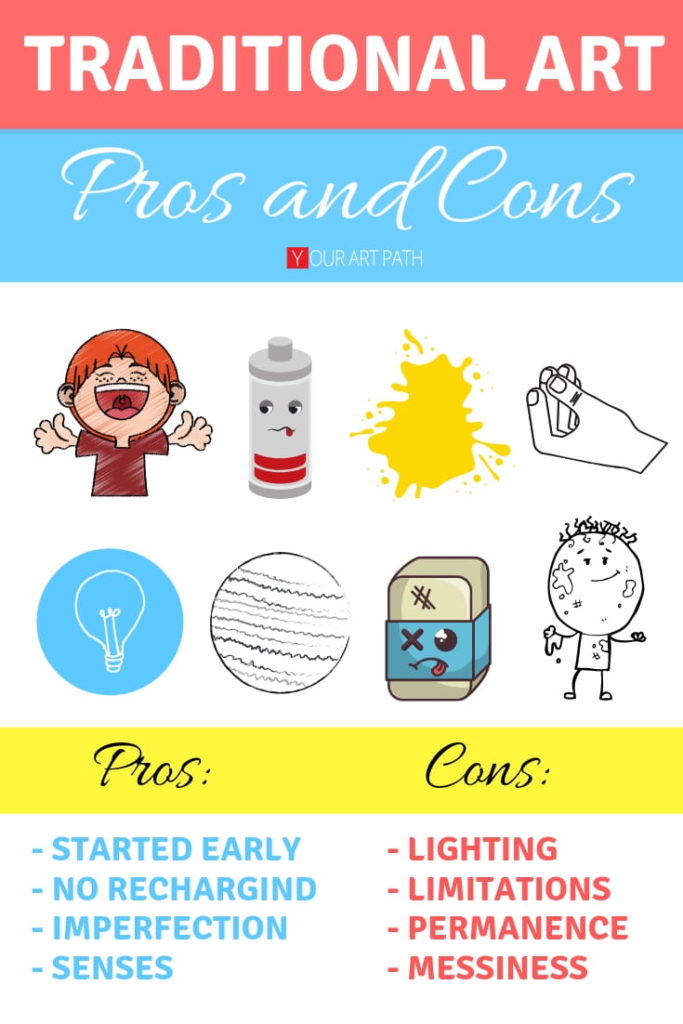
Traditional Art Cons:
Lighting:
I can't tell you how often I and my fellow students in Painting Classes have experienced this issue.
Traditional art is a physical object, and therefore reflects the lighting around it. So you could start painting in the middle of the day and end at night. Your work looks stunning, you pat yourself on the back and go to sleep.
The next morning when you wake up and take your work to a classroom, or a gallery opening you are terrified! The change in light makes your work look completely different and usually not in a good way.
A way of decreasing this problem would be to have a different lighting in your studio, that never changes and is just pure white light. But that definitely doesn't fix the issue completely.
Medium Limitations:
Because you are working with the real medium, all of them usually come with limitations: whether how one medium reacts to the other, or limited color palette, or undesired/ impossible blending.
As a great example comes in watercolor, with every additional stroke you make – the color darkens. And you can't put a coat of white on top of the paint is there – it's there.
You can, of course, pull out a tube of white gouache or a white gel pen and cover unwanted areas, but then comes the issue of knowing how one medium affect the other over time.
Not to mention that you can also run out of your favorite supply in the middle of the process. Trust me, I know how annoying that can be!
Permanence:
Traditional mediums are usually the unforgiving ones. There is no "undo" button, and the line you put in is pretty much permanent.
For example, if you are working with a pen or a marker, once you draw a line, it will most often be a part of your finished work.
Some are more forgiving, like acrylic paint, but even then you can only push it so far.
Messiness:
Let's be honest here, sometimes working with the traditional medium can be inconvenient and messy.
I, for example, love painting in oils. The problem is, before I can start, I need to pull out all of the supplies. And when I'm finished for the day, there comes the time of long and thorough cleaning up (washing brushes, putting away paint, cleaning the palette and so on).
It can be really annoying at times, especially when I only have 2 free hours in the day, and I have to spend half of that time setting things up and putting them away.
Also, one time while I was painting, I put my elbow in white oil paint. My favorite black sweater has a mark on it forever, as oil paint doesn't wash out if left unnoticed for a couple of hours.
However, you might be the person who enjoys the messiness of working in traditional mediums! If that's you, disregard this point completely 🙂

Digital Art Pros:
Flexibility
Digital Art doesn't have a limitation on what your finished work looks like. You can work in a regular brush, or watercolor brush inside a painting software, and still be able to go over what you originally drew.
There is also 2 of the best features (in my opinion) that digital artists sometimes take for granted: layers and undo/redo.
Layers are absolutely fantastic and you can make them work wonders for you if you know how to use them properly.
Sketch on one layer, turn the opacity down, on a new layer make changes and finalize your idea, turn down the opacity again. Paint different colors on different layers.
Delete, erase, multiply, change the layer's mode and so much more!
Undo/redo buttons are also lifesavers. Mistakes happen, and you can learn to live with them, or you can simply undo what you just did and put in a better line. Simply amazing.
Extra Tools
Some artists feel like using these is cheating in a way. I don't blame them, I felt this way too at the beginning. But do you think if a traditional artist could make use of them, they wouldn't?
Of course, they would! And you should too.
- Canvas Flip:
Flipping canvases is a trick used by traditional artists as well. They would put a mirror behind them, to see what their art would look like when flipped horizontally, and then fix those mistakes on the actual work.
The reason for that is it allows your brain to take a fresh look at your work and spot mistakes right of the bat!
When we look at a work for a long time, we familiarize ourselves with its flaws, and that's why flipping canvases is so important.
No mirror needed, just click one button and keep working!
- Canvas Resize:
Ever doodled on a piece of paper and then realized that the hand/head of the person won't fit on the paper?
With digital medium, you can simply resize your canvas to extend/crop it, or grab your sketch and transform it into a small/bigger size.
Problem fixed.
- Canvas Rotation:
If you ever struggled to put in that perfect curved line on a piece of paper, then you will surely love this tool.
The reason why we struggle with this is that our wrist can do a beautiful circular motion that creates the curve we want.
However sometimes it would mean rotating the wrist in an uncomfortable or painful position.
Surely you can rotate a piece of paper, but when working on a big piece of canvas, this simple task is rather problematic if you don't have special tools in hand.
With digital media, you can flip and rotate all you want! Your wrist is saved from harm, and your line is smooth and beautiful. Win-win.
- Shape Tools:
Drawing perfect circles, squares, rectangles or even straight lines can be problematic with a real medium. But in the world of digital art, that issue is fixed with shape/line tools.
- Copy/Paste:
When working on creating a perfect pattern, or just wanting one part of the image to be the exact reflection of the other – copy/paste tools are the go-to tools.
- Smudge:
This one is a two-edged sword. Sometimes you can over smudge and kill the energy of the work, but when used wisely, and with a different smudge tool than the brush you are using, it can result in smooth but lively textured transition!
- Blur/Noise:
Blurring out parts of the image that are not supposed to be in focus can create a stunning depth of field, and add believability to your work!
Noise Filter is used by many artists to kill the digital vibe of work by adding some additional little pixels to it – noise. It's a beautiful tool that I use all of the time!
- Filters/ Adjustments:
Not happy with how your images' colors turned out? Not enough contrast or brightness? Or not happy with anything else?
Usually, all of these can be solved with a few clicks, and the results are awesome.
Keep tweaking, but don't overdo it.
Cheaper in the Long Run
While it may seem that buying an awesome digital tablet is really expensive, and other art supplies are way cheaper, that's not the case in the long run.
The thing is, traditional art supplies have a tendency to run out, and so you will have to go and buy more. Over time, the sum really adds up!
With a digital tablet, if you buy a great quality one, it can last you for many years to come!
One of my friends at art school got her tablet in grade 8 and still used it when I saw her last in the 4th year of University. That's 8 years!
How many times would you have to go to the store in the period of time?
Easier to keep Safe
My professor once put a cup of coffee on an illustration he was working on for a client, then there was a circular coffee stain on it.
While he figured out that it fits the color palette he is using, and he ended up just putting more stains on purpose so it becomes a part of his work – that trick can't always save your art.
Plus, there are things like rain, dirt, fire, greasy fingers or other things like that that can forever put a mark on the piece you spent so long working on.
In the digital medium, there are a ton of ways to protect your files: copy them to your external hard drive, send them to yourself by email, put them on iCloud, Google Drive, Dropbox (or whatever tool you are using) and so many others!
As long as you take the time to protect your files, you will always have a way of retrieving them.
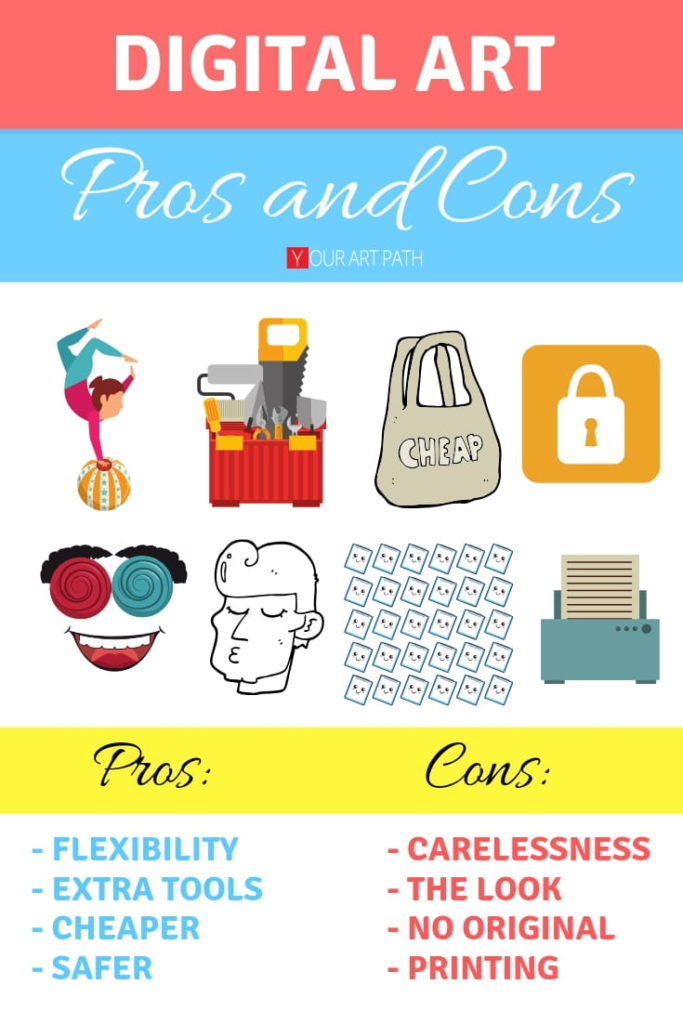
Digital Art Cons:
Carelessness:
Because of all of the tools available, especially the ability to undo/redo, artists tend to become less careful with their application of medium.
Simply because we have the ability to change every single thing about the original idea, we sometimes put in strokes without thinking.
That can mean that the artwork is not the best version of itself.
The Look:
Digital Art can have a very "digital" look. And while some people enjoy it, a lot of others find it boring and lifeless.
To avoid this, try using textures, filters and no over smudging!
No original:
Some traditional paintings cost thousands and millions of dollars, and then their prints cost $10-$200. Why is that?
That's because there is only one original work, and the rest are copies (prints).
With digital art, the original is your software's file of the work with all of the layers and adjustments. Sure, you can print it, but it can be done multiple times. So is there no original? Or is every single one an original? That's for you to decide.
Printing:
Your digital art may look absolutely stunning on a computer, but it will probably look a little different on your phone, and way too different when it's printed.
Some of the ways to avoid it are to remember that working in RGB is great for digital, and CMYK is great for print.
I also like to adjust the brightness of my image by 10% brighter before sending it off to print, but it will always look just a bit different than you intended.
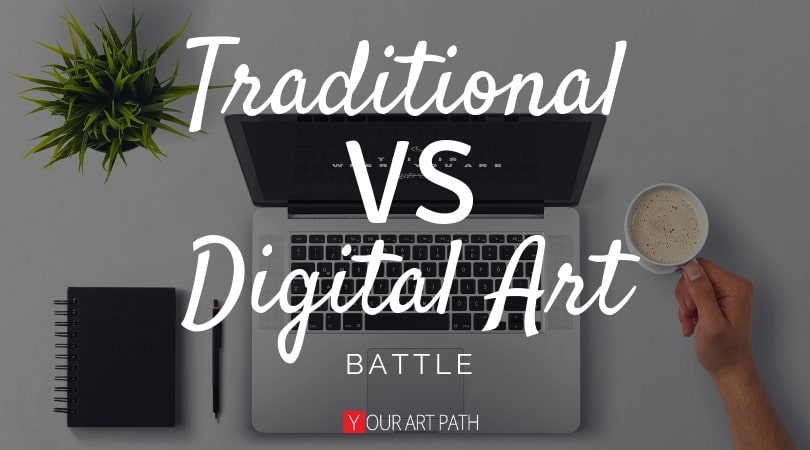
Is Digital Art Easier?
Some say "Digital Art Is Not Real Art", or "Digital Art Is Cheating", and while as I did write an article "Is Digital Art Real Art? 3 Biggest Myths About Artists" I just wanted to take a second to speak my mind on this.
Digital art is easier because of all of those amazing software tools I covered earlier.
However, is it in no way easier from the knowledge perspective. You still must know:
- Drawing and painting fundamentals
- Composition
- Techniques
- Coloring
- And so much more that is present in both Traditional and Digital Art. Those are the skills that come with time and knowledge, and no digital software can substitute it.
It really makes me angry and sad to hear people say things like,
"Digital art? You just have to click a few buttons and it's done".
Because that is definitely not true. Some artists spend longer amounts of time and effort to finish their digital art, then some of those working in traditional mediums.
Is Traditional Art Dying?
This question is also been asked for a while, however, my answer to that would be no.
It is true that the standard commercial industry medium is digital art. However, the gallery shows much proffer traditional art. Also, many people want a real medium painting on their walls.
More than that, even for printed Illustration, half of the artists are working in traditional and are going to continue doing it.
It really is a personal preference.
They Are Interchangeable!
While some divide Digital and Traditional Art into two separate and very distinct categories, there are many artists who prefer using a combination of two.
Moreover, usually, artists learn one of them and then move to the other. It is more often that artists learn traditional art, and then move on to implement what they learned within the digital world.
However, I've had the pleasure to personally meet many stunning artists who first started in the digital art realm, and then became masters of traditional art.
There is no right or wrong medium. There is only the one that feels right for you! And how will you know which one it is without trying out all of them?
So I suggest trying out all of them! You will know what you enjoy the most soon. And the best part is, that you will be able to transfer the skills you acquired from one medium onto the other!
Traditional Art Media and Tools:
If you are planning to get started by learning traditional art, there are so many medium choices for you to make!
Let me get started with the most obvious ones:
Sketchbook:
No matter what tools you will use, you need a good sketchbook. There are some that are made specifically for different mediums, and some that can handle many "Mixed Media Sketchbooks"
I wrote a few articles on them that you might find helpful:
- 36 Best Artist Sketchbooks To Buy
- 5 Best Personalized Leather Sketchbook Deals
- Best Sketchbook For Pen and Ink Drawings
Pencils and Pen:
Definitely the most used tools for beginner artists. Some even continue on with them and make a career with these supplies!
- The Best Graphite Pencils And How To Choose The Right One For You
- Best Pen And Ink Art Supplies
Paint:
Paint is an incredible tool in hands of a skilled artist. Let me tell you a secret, no-one is a skilled artist until they actually spend time working on their skills and building up experience.
The most popular paint types are acrylic, oils, and watercolor.
- The 12 Necessary Acrylic Paint Colors For Beginners | And What To Use Them For
- Winsor and Newton Acrylic Paint Review
- 21 Best Free Acrylic Painting Lessons On Youtube
- Essential Oil Painting Supplies List: Top 13 Products
- Best Paint Additive To Slow Drying Time For Oils And Acrylics
- Learn How To Paint With Watercolor 101
From Traditional Art to Digital Art
The transition from one medium to the other can seem scary and uncomfortable. But remember, at the end of the day it's definitely worth it because each medium teaches you new ways of creating art.
So if you want to move from traditional to digital, let me share with you a couple of resources worth checking.
Digital Art For Beginners
Digital Art Online Classes
You can take the time and try to learn it yourself by searching for free tutorials on YouTube, or you can speed up the process and efficiency of your learning by turning to professionals.
There are plenty of viable online courses out there for you to learn digital art, and here are a few examples for you to get started:
UDEMY
Udemy is a great platform for learning if you are looking for cheaper classes.
One of such courses for beginner artists is "Digital Art for Beginners" by Rich Graysonn. It currently has around 15,000+ students and the number keeps growing! He covers line, shape, coloring, perspective and more, and has a 4.2 starts rating.

SKILLSHARE
Skillshare is also an amazing platform for learning all art & design skills! The best part is, you don't need to purchase any 1 course, instead you pay monthly and enjoy watching all of them for free (sort of like Netflix for learning).
One of the courses I would recommend checking out is – From Analog to Digital: An Introduction to Creating Digital Art by Brad Woodard.
It's a course that will help you make the leap from traditional to digital art.
And the best part is that you will receive 2 free months of Skillshare when you click through my link!
Other platforms worth checking out are CreativeLive and PluralSight. They also offer many stunning courses you could explore.
Digital Art Books
If you are like me and you love holding things in your hands, then you would really appreciate a book that teaches you how to get started with digital art. And since I'm so passionate about them, I actually created a whole article talking about the top books I could find: "5 Best Digital Painting Books For Beginners"
Digital Art Tools
Digital Art Tablets
Now, learning how to create digital art is very important, but so is picking the right table for YOU. It will last you for a long time, so choose wisely!
I have 2 articles that could help you with making the right decision:
- 20 Best Digital Drawing Tablets That Will Satisfy Your Artistic Soul
- 12 Best Cheap Drawing Tablets For Artists | Affordable Drawing Tablets
I suggest you read about them, decide on what qualities are important to you and then invest in yourself and your art!
Here are the 2 absolute best options on the market (in my opinion), but you really don't have to get them if you are just getting started.


Digital Art on iPad
So the one on the left is the newest iPad (at the time of writing this article) and is definitely my preferred choice. I usually use it with an app called "Procreate", and I couldn't ask for a better companion on my digital art journey!
If you do decide to go with an iPad, be sure to check out these articles from me:
- Master Procreate App – Course
- 10 Procreate Tips and Tricks – Things Every Procreate Artist Needs to Know and Do
- 18 Procreate Hair Brushes for Believable Hair Painting
- Freebies For Procreate Artists
Traditional and Digital Art Animation
Being able to animate your traditional or digital art is one of the best feelings ever! It's like your Illustrations and characters come alive!
There are multiple ways of doing so including frame-by-frame animation, character rigging in After Effects and 3D animation.
Since this article is mostly for 2D artists, I'm going to focus on the first two:
Frame-by-frame animation is when you redraw the image over and over again in a sequential order that creates an animation. I created a lesson that you can check out on How to Create a Simple animated GIF in Photoshop.
And the there is animation in After Effect where you create a character in a special way one time, then rig it and animate it by moving the elements on the page. This type of animation I've discovered recently and it's so much fun!!
If you want to learn how to get started, I recommend checking out Bloop Animation for their free and premium tutorials.
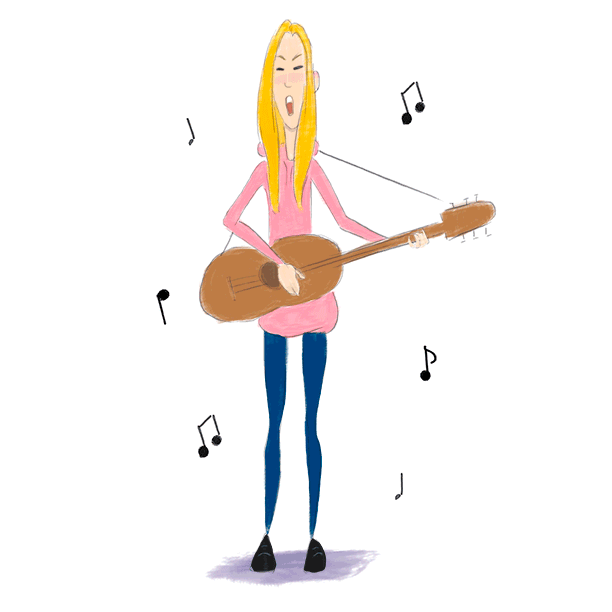
Traditional and Digital Art Challenges
Art Challenges are a fun way of building a habit of drawing every day and of fighting art block if you have it!
I currently run 2 challenges for artists all around the world:
- 7 Day Drawing Challenge – awesome for any medium, and you get notified by email each day of the challenge and to receive inspiration. It's free to join!
- 30 Day Drawing Challenge – best used by Digital Artists. Its purpose is to improve your art skills tremendously in 30 days, and it's a premium challenge course.
And you can also search for some other free challenges all around the web, but then you will need to make sure that you will discipline yourself and create notifications to follow it every day!
Traditional VS Digital Art: Who's the Winner?
In respect to all said above, these 2 mediums are as much different as they are alike. All people (not just artists) shouldn't put one or the other in a category of "bad" art.
[click_to_tweet tweet="At the end of the day, we need to look past the artist's medium, and into the concept behind their work. The idea and craftsmanship are so much more valuable than whether it was executed in the traditional or digital medium. (yourartpath.com)." quote="At the end of the day, we need to look past the artist's medium, and into the concept behind their work. The idea and craftsmanship are so much more valuable than whether it was executed in the traditional or digital medium."]
I hope you enjoyed the read!
Let me know in the comments below what are your thoughts on this topic.
Drawing Basics and Traditional Art
Source: https://yourartpath.com/digital-art-vs-traditional-art

0 Response to "Drawing Basics and Traditional Art"
Post a Comment